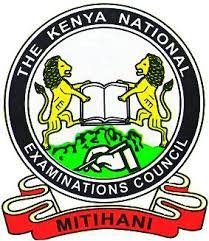
Physics Paper 2 (232/2)
SECTION A (25 marks)
Answer all the questions in this section.
1 State the reason why when a ray of light strikes a mirror at 900, the reflected ray travels along the same path as the incident ray. (1 mark)
2 Explain why the image formed in a pin hole camera gets blurred when the hole is enlarged. (2 marks)
3 State the reason why the magnetic field strength of a magnet is greatest at the poles. (1 mark)
4 Figure 1 shows a cell of e.m.f. 2 V connected in series with a resistor R and a switch S.
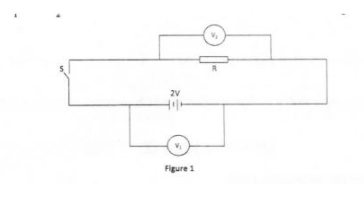
(a) State the reading of V1 with S open. (1 mark)
(b) With S closed, V1 reads 1.6 V. State the reading of V2. (1 mark)
5 centre of curvature of the mirror.
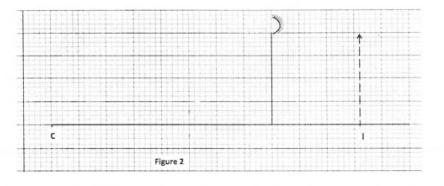
Complete the diagram to show:
(a) how incident rays are reflected to form the image; (2 marks)
(b) the object position. (1 mark)
6 Figure 3 shows a ray of light passing into a glass prism ABC.

(a) Determine the values of a and b. (1 mark)
(b) Identify X. (1 mark)
8 Figure 4 shows a simple transformer connected to a 12 V a.c. source and an a.c. voltmeter.
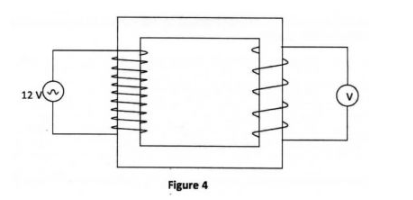
By counting the number of turns in each coil, determine the reading on the voltmeter.
9 In domestic wiring systems lamps in the lighting circuit are required to be in parallel and not in are connected in series with a switch, a cell and a milliameter.

observation. (2 marks)
burning wood is cut off by the glass sheet. (2 marks)
12 A photon of ultraviolet light having energy E falls on a photoemissive surface whose work function is T. Write an expression for the maximum kinetic energy of the resulting photoelectron in terms of E and T. (1 mark).
13 When a germanium crystal is doped with arsenic, it becomes an N-type semiconductor. Explain how this change occurs. (2 marks)
(Number of electrons in the outermost shell for germanium = 4, Arsenic = 5)
SECTION B (55 marks)
Answer all the questions in this section.
14 Figure 6 shows two convex lenses A and B used to produce a magnified virtual image of an object.
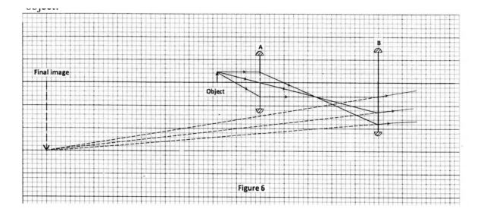
(a) Determine the focal length of lens A. (Take 1unit to represent 10cm).
(b) State the function of:
(i) lens A (1 mark)
(ii) lens B (1 mark)
(c) State how the functions in (b) are achieved by:
(i) lens A (1 mark)
(ii) lens B (1 mark)
(d) Determine the magnification produced by:
(i) lens A; (2 marks)
(ii) the whole system. (2 marks)
15 (a) Explain how a positively charged electroscope gets discharged when the cap is touched with a finger. (2 marks)

(b) Figure 7 shows capacitors A and B connected in series with a battery of e.m.f 4 V.
Determine:
(i) the effective capacitance of the circuit. (3 marks)
(ii) the quantity of charge in capacitor A. (3 marks)
(iii) the quantity of charge in capacitor B. (1 mark)
(c) Figure 8 shows an isolated negative point charge Q.
On the figure, sketch the electric field pattern around the charge. (2 marks)
16 (a) Two points A and B have a potential difference of V volts. Q coulombs of charge flow
(i) the electrical energy transformed between the two points in terms of Q. (1 mark)
(ii) the power transformed in terms of Q and t. (1 mark)
(iii) show that the power transformed is given by P = IV. (2 marks)
(b) The lighting circuit in a house has 20 lamps each rated 60 W, 240 V. Determine whether a fuse rated 4 A can be used in the circuit when all the lamps are put on. (4 marks)
17 (a) Figure 9 shows a cathode ray tube in which a beam of electrons is cast on the screen.
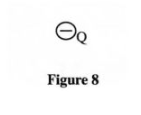
Figure 9
(i) state how the electrons are produced in the tube. (1 mark)
(ii) state how the electron beam is detected. (1 mark)
(iii) State the reason for having a variable potential difference (p.d.) at the:
(I) grid; (1 mark)
(II) anodes. (1 mark)
(b) Figure 10 shows the waveform of a signal applied at the y-plates of an oscilloscope whose time-base is switched to the scale of 2 milliseconds per centimeter.
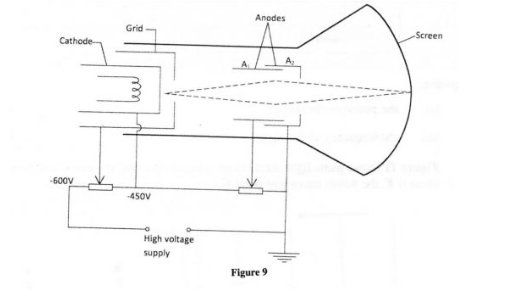
Determine:
(i) the period of the signal; (2 marks)
(ii) the frequency of the signal. (3 marks)
18 (a) Figure 11 shows plane light waves in air incident on a convex lens whose principal focus is F, the waves move past point G.

Complete the diagram to show the pattern of the emergent waves between the lens and point G. (2 marks)
(b) Figure 12 shows crests of circular water waves spreading from two points A and B
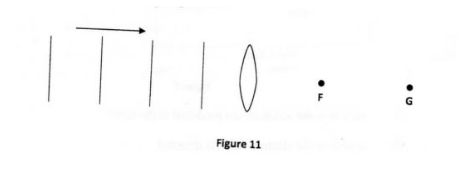
Figure 12
Given that the amplitude of each wave is 5 cm, state with a reason the amplitudes of the
(i) C; (2 marks)
(ii) D. (2 marks)
(c) Figure 13 shows a standing wave formed when a string of length 1.5 m stretched between two supports is plucked in the middle.

Figure 13
(i) Explain how the standing wave is formed. (3 marks)
(ii) Determine the wavelength of the standing wave. (1 mark)
coils in series.
19 On the figure, indicate
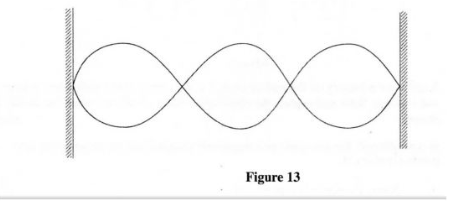
(i) the north and south poles of the resulting magnet (1 mark)
(ii) the complete magnetic field pattern between the poles. (1 mark)
(b) Figure 15 shows the permanent magnet made in part (a) above.
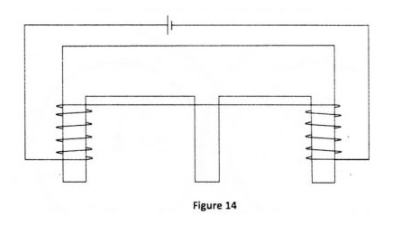
A coil wound loosely on the middle limb is connected in series with a low voltage a.c. and a switch. State and explain the observation made on the coil when the switch is closed. (2 marks)
positively charged.
(i) Name the electrolyte in the cell. (1 mark)
(ii) Explain how:
(I) Zinc gets negatively charged. (1 mark)
(II) Copper gets positively charged (1 mark)
(iii) State what constitutes the current when a wire is used to connect the zinc plate and the copper plate externally. (1 mark)
